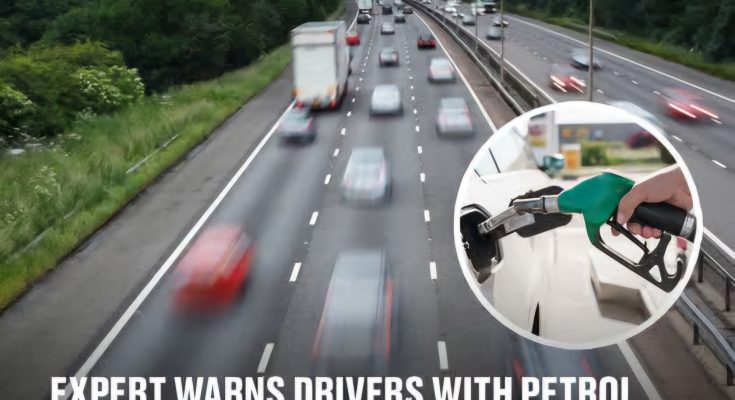Expert warns drivers with gas cars about major change they will have to get used to
The transition from gas-powered vehicles to electric vehicles (EVs) is no longer a distant possibility—it’s happening now. Governments worldwide, including those in the U.K. and Canada, have set ambitious goals to phase out traditional gasoline and diesel vehicles within the next decade. The U.K. has committed to banning the sale of new gas and diesel cars by 2030, with hybrid models following by 2035. Similarly, Canada aims for 100% of new vehicle sales to be electric by 2035. While these deadlines may seem far off, experts warn that drivers of gas-powered cars should begin preparing for these changes now, as the shift is already in motion.

One of the most significant adjustments drivers will face is transitioning to automatic transmissions. Unlike gas-powered cars, which often feature manual gearboxes, EVs use a single-speed transmission that eliminates the need for shifting gears. This design allows for a smoother and more efficient driving experience, making it easier to operate an EV. However, for drivers who are used to manual transmissions, this change may take some getting used to. Stuart Masson of The Car Expert refers to this as “car industry 2.0,” emphasizing that while the simplified driving experience of EVs may feel unfamiliar at first, it will ultimately prove to be a positive change.
Another inevitable shift is the gradual decline of gas stations. While fuel stations won’t disappear overnight, their numbers will dwindle as EV charging networks continue to expand. In the coming years, gas car owners may find it more challenging to locate a fuel station, particularly for long-distance travel. This mirrors the early experiences of EV owners, who had to plan their trips around charging stations. Over time, the convenience of finding gas stations will decrease, reversing the dynamic that has long favored gasoline-powered vehicles.
Canada’s EV strategy outlines how this transition will unfold. Automakers are required to meet increasing EV production targets, with 20% of all new cars being electric by 2026, 60% by 2030, and 100% by 2035. Although gasoline-powered cars will remain on the roads for years, their numbers will decline as EV adoption accelerates. The shift is clear—gas cars will eventually become a rarity, making way for an electric-dominated market.
For those considering the switch to an EV, one of the most common concerns is range anxiety—the fear of running out of battery power before reaching a charging station. However, Masson believes this worry is largely exaggerated. “The average trip is about nine miles,” he explains, noting that most modern EVs offer a range of up to 250 miles on a single charge. For daily commuting and routine driving, these ranges are more than adequate. As battery technology advances, EVs will achieve even greater distances, further easing concerns about running out of power.
Expanding charging infrastructure will also play a crucial role in facilitating the EV transition. Canada is investing heavily in its charging network to support the government’s ambitious targets. Currently, there are over 25,500 charging ports across the country, with projections to increase to 33,500 by 2026. However, much of this infrastructure is concentrated in provinces like Quebec, Ontario, and British Columbia, leaving room for expansion in other regions. A reliable and widespread charging network is essential to making EV ownership practical and accessible for all drivers.
To encourage the shift to EVs, governments are offering financial incentives to both automakers and consumers. In Canada, automakers can earn credits by meeting EV production goals or investing in public charging infrastructure. Consumers can take advantage of rebates and other incentives to help offset the upfront cost of purchasing an electric vehicle. These measures aim to make EVs more affordable, ensuring that people from all backgrounds can participate in the transition to cleaner transportation.

For those hesitant to give up their gas-powered vehicles, Masson offers reassurance: “You’ll still be able to drive your gas car for decades.” He emphasizes that the transition will be gradual, with existing gasoline vehicles remaining in use for years. However, the reality is clear—electrification is inevitable. Whether drivers choose to embrace the change now or wait until it becomes necessary, the automotive landscape is evolving, and gas cars will eventually become obsolete.
As bans on new gasoline vehicle sales take effect worldwide, drivers must prepare for these changes. This transition will require adjustments to driving habits, vehicle ownership, and long-term planning. The decline of gas stations, the rise of automatic transmissions, and the increasing prevalence of charging networks will reshape how people approach both daily commutes and long-distance travel.
While the shift to EVs may seem overwhelming, it offers many benefits, including lower emissions, reduced maintenance costs, and a simpler driving experience. Experts stress that the earlier drivers begin adapting, the smoother the transition will be. By staying informed about new technologies, taking advantage of financial incentives, and embracing expanding charging infrastructure, drivers can ensure they’re ready for the electric future.
Ultimately, the move to EVs marks a revolution in the automotive industry. It’s not just about the vehicles themselves but about how people plan, drive, and think about transportation. Whether drivers choose to make the switch now or wait until it’s unavoidable, one thing is certain—the electric future is here, and it’s time to prepare for what’s ahead.



